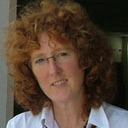

How can we best select species that simultaneously provide ecological and economic benefits? Icaro Cooke Vieira / CIFOR.




Carol Colfer and Doris Capistrano dedicate their book “The Politics of Decentralization”: Forests, Power and People” to “those whose voices have not yet been heard,” and this sentiment was at the heart of the T20Q (Top 20 Questions) project—a global project that allows you to have your say about issues of importance.
The T20Q project involved a two-stage process—‘crowd-sourcing’ questions considered to have high priority for research and policy by anyone with an interest in forestry and landscapes, followed by a return to the crowd to rank those questions. The crowd defined itself; there were no barriers to participation except access to the Internet and an ability to read French, English, Indonesian or Spanish. These barriers are not insignificant for many people, and I will return to the language issue later. Suffice to say that all the partners in the Evidence-Based Forestry (EBF) initiative regularly communicate with and invite participation in their activities online; therefore T20Q made the decision to survey participants wholly via the Internet, and used a variety of social media to reach this global online community.
More than 500 people living or working in more than 100 countries submitted 2,800 questions in the first phase of T20Q. Topics that occurred most frequently were grouped, using index terms from a controlled vocabulary applied by an independent forestry-information specialist, into broad themes.
Representative questions from these themes were randomly selected for the second phase, where participants could score the perceived significance of the questions on a scale of 1 to 10. A total of 818 people participated in this phase, which required assessing the 109 representative questions presented to them in a series of categories. The questions and categories were all randomized so that each participant was presented with the questions in a different order.
One of the greatest surprises of the project was the level of participation of younger people, women and those from the Global South. These are often the very people whose “voices have not yet been heard.” A quarter of all participants were under 35 years old, and 34 percent of voters were women. While this falls short of the target 50 percent, it far exceeds the proportion seen in many international decision-making meetings.
Just under 65 percent of participants who submitted questions were from Asia, Central and South America, and Africa, and while the figure was closer to 50 percent for the voting phase, the country contributing the highest number of voters was Brazil. That is more surprising still in light of the fact that the project was limited in the first phase to French, English, Indonesian and Spanish, and in the second phase to English only. There was very little engagement in T20Q from Russia or China, two hugely important forestry countries. This was almost certainly due to limitations of language access.

There was considerable interest shown by participants (more than 500 people indicated interest when asked this question in the surveys) in repeating this type of exercise regionally and for specific thematic areas, notably ecology, biodiversity and restoration, but also climate change and REDD+. Engaging people for regionally focused exercises modeled on T20Q would need to take the language of target participants into account.
Participants were mostly highly educated, with more than 95 percent having at least a bachelor’s degree. Although there was a broad spread of work activities reported, the majority were engaged in research or education; a relatively small percentage (11 percent) worked directly in policy.
The 20 questions that scored highest overall can be categorized or clustered in many ways. For our purposes, they are shown clustered according to six broad topics that emerge from simple indexing and discussion with project colleagues (see the list of questions below).
The highest-ranking question may perhaps surprise many people. It is not about climate change or deforestation, nor does it mention REDD+: It concerns restoration of degraded areas to provide multiple benefits. However, it is a question that concerns all these things, including the much-ignored second “D” of REDD+, namely forest degradation.
The solutions to the question, whether policy or research, will require the sort of integrated thinking that was being strongly promoted in international discussions during 2014. Most of the top 20 questions will require a multidisciplinary approach to answer, and many of them would make fascinating systematic reviews of the sort being undertaken in the EBF initiative.
T20Q is a step in a series of evidence-based activities, rather than the silver bullet that informs us what is most important for research and policy in forestry and landscapes. The questions will be discussed by the EBF partners to identify those that could be systematically reviewed; others may stimulate thinking for new research programmes. All of them can be considered in the context of forthcoming international discussions as representative of the views of a subset of the forestry and landscapes community on what constitutes a priority agenda for further deliberation and action.
Gillian Petrokofsky is a senior CIFOR Associate and James Martin Research Fellow, University of Oxford.
T20Q was funded primarily by the UK Department for International Development (DFID) through their KNOW-FOR grant to CIFOR and co-ordinated by the Sylva Foundation, a charitable Foundation based in the UK in collaboration with CIFOR.
Copyright policy:
We want you to share Forests News content, which is licensed under Creative Commons Attribution-NonCommercial-ShareAlike 4.0 International (CC BY-NC-SA 4.0). This means you are free to redistribute our material for non-commercial purposes. All we ask is that you give Forests News appropriate credit and link to the original Forests News content, indicate if changes were made, and distribute your contributions under the same Creative Commons license. You must notify Forests News if you repost, reprint or reuse our materials by contacting forestsnews@cifor-icraf.org.